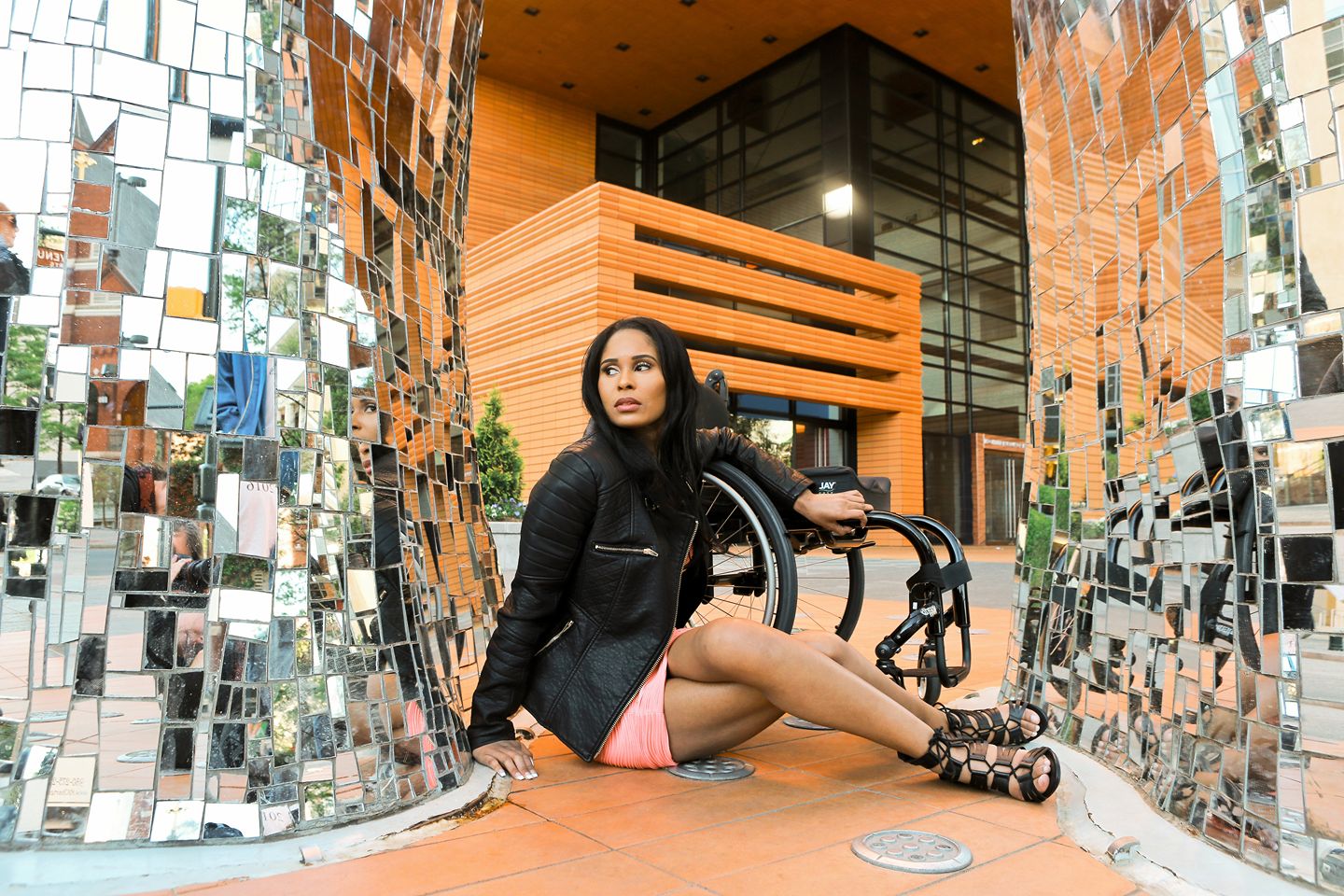WHEEL PRETTY
/Tae McKenzie, founder of the MFSE (Modeling To Fight Stroke & Epilepsy) Fashion for Change in an outfit designed by Tracie Elizabeth Mackins Jones, head of the Isabel Vernard label. Tracie is designing the fashions for the Wheel Pretty runway show at 4 p.m. Aug. 26 during the Southern Women's Show at the Charlotte Convention Center uptown.
Whether it's from an illness, disability or temporary injury, being in a wheelchair doesn't mean you have to sacrifice style says designer Tracie Elizabeth Mackins Jones. Tracie, a Charlotte native, is head of the Isabel Vernard label that's known for fun and feminine clothes with an edge. "I have a Southern woman's eye, but with a touch of international taste," she says.
Tracie Elizabeth Mackins Jones with a model wearing Isabel Vernard.
Tracie makes a lot of custom designs including wedding gowns, evening gowns and outfits for special occasions. Her talent for sewing and her belief that fashion is for everyone led her to recently begin creating stylish clothes for women with disabilities.
You can see her talent on the runway Aug. 26 at 4 p.m. during the Wheel Pretty Fashion Show that's part of the Southern Women's Show at the Charlotte Convention Center uptown. It's presented by Women Embracing Abilities Now Charlotte and features models in wheelchairs from The Raw Beauty Project Charlotte. The emcee is Deja Barber, Ms. Wheelchair North Carolina.
"I’ve really pushed the boundaries of what you would think you would see someone in a wheelchair wear," Tracie says.
Tracie's love for fashion started at a young age; She designed most of the clothes she wore to school including Myers Park High School. She began her college career at East Carolina University with the intention of becoming a pediatric plastic surgeon. But after two years she decided to follow her heart and enroll in design school in Atlanta. That led to a study abroad program in London. "I thought I was going to be there for three months and I stayed three years," Tracie says. She finished school with a Bachelor of Arts degree from the American InterContinental University in London and landed a job at Diva Couture. Back in the U.S., she was an intern at Betsey Johnson in New York City before returning to Charlotte and starting her own label six years ago.
Several months ago, she designed outfits for MFSE Fashion for Change and met two models in wheelchairs - Monique Stamps and Gentle Mitchell. They immediately clicked and began telling Tracie about their problems finding clothes to wear that weren't bland. Tracie was surprised when she found out that a simple pair of pants for a woman in a wheelchair can cost around $400.
Gentle Mitchell, a mother of four and a wheelchair quad rugby player, in Isabel Vernard.
"I’m not in a wheelchair, so I didn’t think about the hindrance women in wheelchairs have," Tracie says. "Every woman wants to feel beautiful. Every woman wants to have an outfit she loves. I knew that I could make it happen."
When she began working on the collection for the Wheel Pretty fashion show, a childhood memory of her great grandmother popped into her head. "She was in a wheelchair for three years and she always used to say that she needed some color and some texture so she could look lively in her wheelchair."
Tracie puts a lot of thought into the textures, colors and materials she uses. Here are her tips for women in wheelchairs.
Don't be afraid to focus on your shoulders. "That's the body part that everyone sees the most."
Material matters. "I work a lot with sequins, but make sure any fabric I use doesn't itch or irritate. Some of my clients don't have full sensation, so they won't know something is irritating them until days later when they see a bruise or scratches. I use a lot of natural material including cottons that stretch. Dyes can irritate the skin so I make my own dyes."
Focus on the front. "I put most of the detailing on the front and keep the back simple since it won't be seen. And it makes it more comfortable. The most important thing is comfort. When I think about my favorite outfits, I like them because they're comfortable and I feel relaxed in them."
Make sure it makes sense. "I try to make sure the pieces I design can be worn over and over again."
Be creative. "I figured out a way to make clothes that have magnets that are strong enough to stay because that makes it so much easier for them to dress themselves."
Make a statement. "I believe in investing in a good overcoat or jacket that you can throw over anything and it immediately looks a million times better. I've been able to design dusters with a kimono-type feel that add drama to an outfit."
Shoes are still important. "I've learned that a comfortable heel or a low platform shoe causes less of a strain. A lot of women wear heels for a little bit, then switch to a flat or sandal."
It's all about accessories. "Nothing is too crazy. Think color, movement and texture. For the show, I'm doing some head pieces that I would describe as the Kentucky Derby meets the movie Coming To America."








